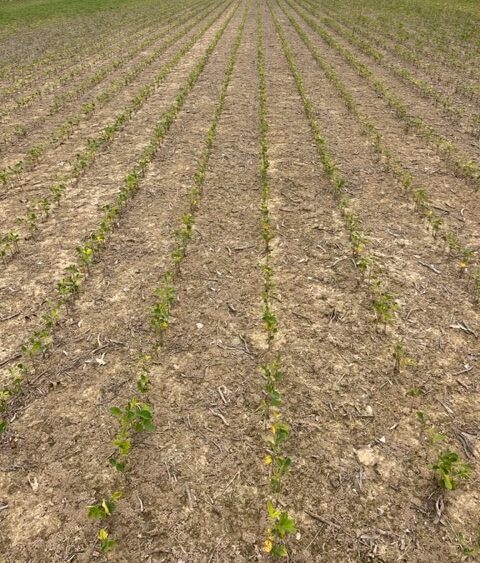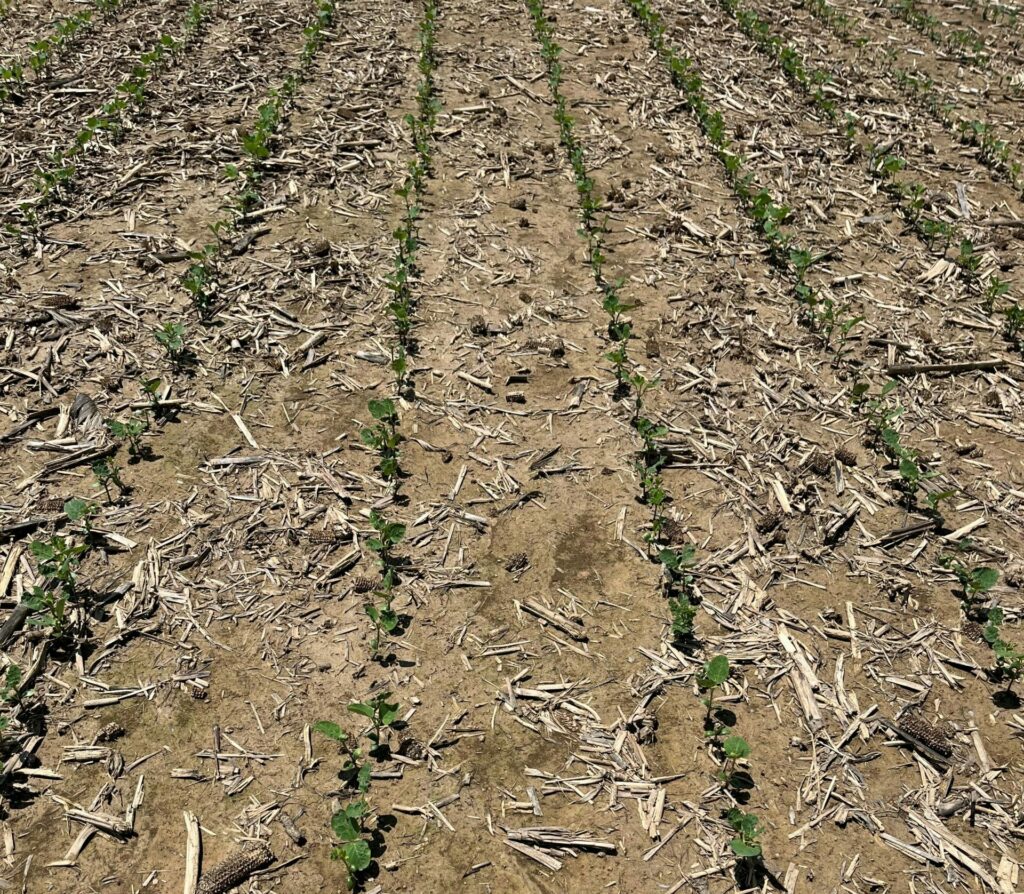The call of the last week was Pre-emerge herbicide injury in soybeans. Several folks reported that their soybeans were “going backwards”. This is not a surprise as in wetter springs the probability of seeing injury from Pre-applied herbicides is greatly increased. That coupled with an increase in soybean acres this spring would increase the probability of herbicide injury in that crop. I would expect more of the same as we move into June with all the rain in the past few days.

The two most common herbicides causing this injury are metribuzin (Sencor, others) (Picture 1) and flumioxazin (Valor, others). The way soybeans tolerate these herbicides is through metabolism. There are enzymes in plants that alter the structure of a herbicide making it less active. When very young soybean seedlings are under excessive water stress like this spring they make less of those enzymes thereby increasing the injury potential of any herbicide.
Another cause for the increase in injury, particularly with Valor, is that many moved to this herbicide after a long absence and forgot that applying it with a Group 15 herbicide (Dual Magnum, Outlook, Warrant, etc.) will greatly increase the likelihood of soybean injury (Picture 2). That is the reason those tankmixtures are not on the label within 14 days of planting on tilled soil. Even on no-till where row cleaners disturb the soil surface near the row, it seems the potential for injury may be increased.

Will the soybeans recover? This must be evaluated on a field by field basis as so many factors go into how well soybeans will recover. In general, if new terminal growth looks good then the soybeans are on their way to recovering (Picture 2). One thing to keep in mind is that typically soybeans are able to compensate for thinner stands if the stand is uniform.
In other instances, Valor attached to soil particles is splashed up on the young seedlings which will cause a very visible burn. Typically, soybeans will recover from splash burn fairly readily.

